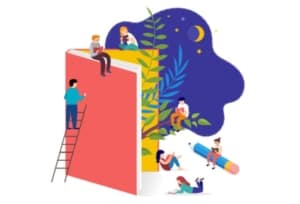Ownership and Agency
There are many ways a teacher can provide agency for students. One strategy is student voice. For example, when creating a classroom environment, it’s important to have student buy-in from the beginning. Teachers need to encourage student voice. Asking students what they think creates ownership in what goes on in the classroom. My friend teaches high school biology. Whenever she tries a new teaching technique, she asks her students how it worked for them as learners. Did it help them access content? Did it help them analyze the material presented and make sense of it? She wants their voice involved in the teaching strategies she uses. The next step is to implement those ideas that students give us. When we ask them for their opinion, and then implement their ideas, it tells them we value what they have to say – we value their student voice.
Another strategy is asking for student feedback about how they learn best. We discover not all students learn the same way. Do we provide multiple opportunities for them to share their perspectives? Not all students want to speak up in class, while others could easily monopolize the conversation. Some students thrive on working together in groups while others are more productive when working on their own. Do we provide different ways for them to share their thinking? Having students turn to a partner and express their ideas, after hearing a presentation, allows all those who choose to verbalize their thoughts, not just those who raise their hands and are called on. Another strategy to use for us to hear from our students is to have them respond in writing to a particular lesson. For some, writing can be a powerful way to put forth their ideas in a less public way than speaking Working on a project as a group or individually can provide an even different opportunity for students to learn. To create a product, they need to plan steps for what they will do to come up with the end result. When students have different ways to express themselves, ways that may be more conducive to their learning style, it promotes ownership, it allows them to feel more in control of their learning. When teachers vary the learning methods, more students become involved in class, their confidence increases, and they learn to drive their learning proactively rather than passively.
As early as first grade teachers can be the guide in letting students take the lead in their learning. When teaching student’s writing skills, many teachers create sentences and paragraphs together as a group, using the students’ ideas while crafting their writing on chart paper. It engages and motivates students when they see their words on display.
High school students can be encouraged to understand how what they learn in school affects their lives. When we tie the curriculum to everyday experiences it brings lessons alive and makes them more than just stories from history, or algorithms students may not see how they will ever use.
When we first shut down schools for Covid in March of 2020, my 18-year-old grandson told me he and his friends were very unmotivated about their on-line classes. They would roll into Zoom class straight from bed, many times with their pajamas still on. After a few negative experiences they began to realize that they were going to fail the class if they didn’t engage themselves. This was a different way of developing ownership. It was almost forced because their teachers were busy experiencing their own form of ownership. They had to try to create engaging virtual lessons in a way they weren’t used to doing. They had to be the guide in providing a platform for their students to learn, so they had no time for handholding. After this mistake my grandson and his friends soon realized it was their education that would suffer if they didn’t take the initiative and be proactive about their learning.
One other important strategy is to embrace mistakes! Help students understand their mistakes provide a wonderful opportunity for learning. Share the mistakes you made, how you worked to overcome them, and what you learned from them. Students are more willing to take risks when they feel their efforts are not always tied to a grade or consequence. As Carol Dweck says in her book Mindset, developing a growth mindset in students helps them see that persistence and hard work can help them achieve their goals. When students fail at something and try again, they learn you don’t have to achieve your goal every time to be successful. Babe Ruth, one of the best hitters in baseball, had a batting average of .342, that means he only got a hit 3 ½ times for every 10 times he was at the plate.
By encouraging student voice, providing multiple strategies for learning, embracing mistakes, and implementing their ideas in the classroom, we give student’s agency to take charge of their learning. Research shows that students who take ownership for their learning are more effective at identifying and working toward learning goals, develop a sense of self-efficacy, and more often believe they are in control of their success in school.


